The New Jersey Devils have drafted 329 players from 1982 to 2019, winning three Stanley Cups while appearing in five during that time. And no team does so without nailing some of their draft picks. That got me thinking, “what would a team made up of the Devils’ greatest draft picks look like?” So I thought it’d be fun to build one from scratch and see how they’d stack up.
There’ll be some familiar names, but also some you may have forgotten were originally Devils’ draft choices. I broke things down by position group, starting with centers, followed by wingers, defensemen, and goaltending. And by the time it all came together, it was hard to argue against why the team was successful during Lou Lamoriello’s prime as a general manager.
Building the Devils’ Center Depth
Any team, even one based on all-time great players, starts with building it down the middle. In this case, the best center that was a Devils’ draft pick would be Scott Gomez. He had an immediate impact, finishing with 71 points in 80 games as a rookie on a team that won the 2000 Stanley Cup. He also earned the Calder Trophy as the NHL’s best rookie, something no Devil has done since him. His most productive years came with the Devils, too, as he had 484 points in 606 games, leaving no question he was a top-line center during his prime.
Who to select after Gomez is where things get a bit interesting. Plenty of great centers, like Bobby Holik and Jason Arnott, played for the Devils but weren’t draft choices of the team. After looking down the list of draft picks, Brian Rolston would make plenty of sense to line up behind Gomez. He was a first-round pick at the 1991 Draft and won the Stanley Cup with the team in 1995. He was traded in 1999 for Claude Lemieux but returned for a second stint as a free agent in 2008. He played 16 seasons, nine with the Devils, and finished with 761 points in 1256 games. He was a productive scorer but also a steady, two-way player, as he finished in the top 10 of Selke voting four times in his career.
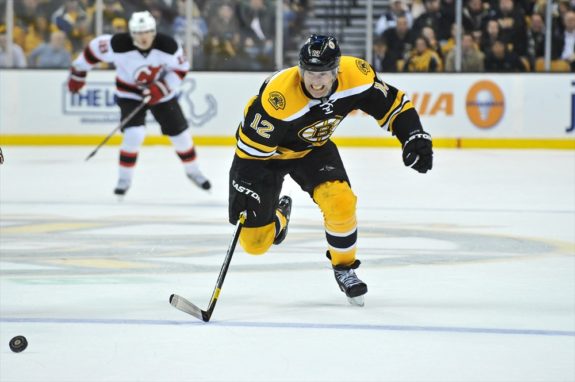
Next up is putting together the bottom six. And I couldn’t think of two more capable Devils’ draft picks to do so than Brendan Morrison and Travis Zajac. We’ll start with Morrison, who was a second-round pick (39th overall) at the 1993 Draft. He only played in three seasons for the Devils, but he did become a mainstay in the Vancouver Canucks’ lineup for eight seasons. He averaged 52.7 points per 82 games (601 points in 934 games) and was the gritty type of player who could score and defend.
Finally, there’s Zajac. He was a first-round (20th overall) at the 2004 Draft and has spent his whole career with the team. He was a top-six forward for close to a decade, although his production slipped quite a bit during the 2019-20 season. But while his offensive game is not what it once was, he’s still a reliable defensive forward. He’ll play against opponents’ top lines and is still a high-end penalty killer, making him the perfect bottom-six role player on this team.
No Shortage of Elite Left-Wingers
Now that we have the centers assembled, it’s time to start putting some wingers around them. And there’s no lack of all-time great wingers among Devils’ draft picks, though we’ll start with the left side.
Leading things off is Brendan Shanahan, who was the second overall pick at the 1987 Draft. He only played in four seasons for the Devils but totaled 228 points in 315 games. He signed with the St. Louis Blues as a restricted free agent in 1991, a transaction that netted the Devils Scott Stevens as compensation since Shanahan was an RFA.
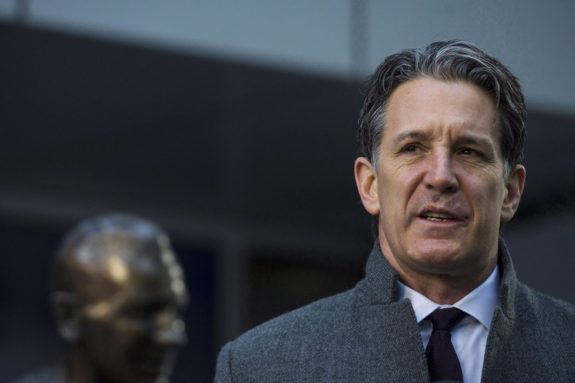
Shanahan went on to have a Hall of Fame career after leaving the Devils. He totaled 1354 points in 1524 games, won three Stanley Cups, and played in the All-Star Game eight times. He also had the second-most consecutive 20-goal seasons (19), so he’s an easy choice to put alongside Gomez.
Next up is Patrik Elias, the Devils’ all-time leading scorer. He was a second-round pick at the 1994 Draft and spent his entire 20-year career in New Jersey, totaling 1,025 points in 1240 games, along with two Stanley Cup championships. He was a great all-around player who the team utilized in all situations because he was a high-end offensive talent and staunch defender.
Related: NHL’s Top 5 Playmakers of the Decade
The list of great left-wingers continues after Elias. There’s Kirk Muller, who was the second overall pick behind Mario Lemieux at the 1984 Draft. The Devils were never a great team when Muller played for them. But his most productive seasons came in New Jersey — he had 520 points in 566 games, including six-consecutive seasons posting 65-plus points. Plus, he was the heart of the team, which is how he earned the nickname “Captain Kirk.”
But wait, the depth at left-wing doesn’t stop after Muller. Zach Parise was the Devils’ first-round draft choice (17th overall) at the 2003 Draft. He played in seven seasons for the Devils, totaling 410 points in 502 games, including a career-best 94-point season in 2008-09. He left the team as a free agent in 2012 to sign with the Minnesota Wild, but the team hasn’t drafted a talented like him since then. And you could probably even argue he should be ahead of Muller on this All-Star team.
Devils’ Right-Wingers No Slouches, Either
The Devils don’t have the caliber of right-wingers they do on the left side, but there’s still high-end talent. Rounding out the top line is John Maclean, the team’s second all-time scorer behind Elias. He was the sixth overall pick at the 1983 Draft and made his debut the following season. He became an impact scorer by his third season and had three-consecutive 40-goal campaigns from 1988-1991. His scoring prowess and shot make him the right fit to play alongside an elite playmaker like Gomez.
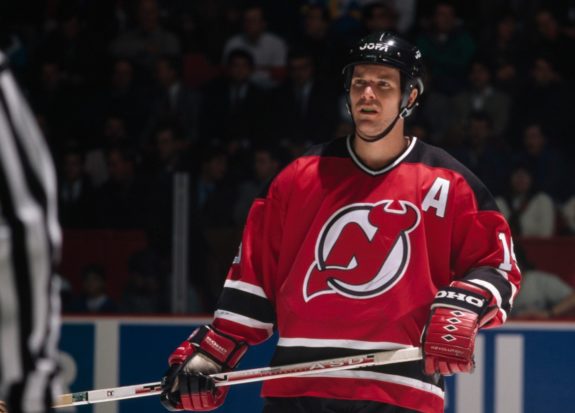
Lining up behind Maclean is Pat Verbeek, who the Devils selected with the 43rd overall pick at the 1982 Draft. He played in seven seasons for the Devils and finished with 20-plus goals in six of them. His breakout came when the organization traded him to the Hartford Whalers in 1989, where he’d go on to become one of the top scorers in the league. He finished his career with 1052 points in 1424 games, so he’s the right fit to round out the top six.
Next up is completing the Devils’ bottom six. And just like the left side, there’s still talent to be had. Rounding out the third line is Bill Guerin, who was the fifth overall pick at the 1989 Draft. His best years came after his playing days with the Devils, but he still finished with 20-plus goals in three of his five-plus seasons in New Jersey. He was a solid two-way player who could play in different situations, making him a good fit alongside Morrison and Muller.
Related: The Best NHL Forwards Ever: A Lineup For the Ages
There are some strong candidates to finish up the group of forwards, like Brian Gionta or Petr Sykora, but an overlooked Devils’ draft pick is Steve Sullivan. He was a ninth-round pick (233rd overall) at the 1994 Draft, though he only played in one season before the team traded him for Doug Pederson in 1997. But he’d go on to have an incredibly productive career after the trade, finishing with 747 points in 1011 games over 16 seasons — 60.5-point pace over 82 games. He was a 13.6% career shooter, so he knew how to score goals. But he was also an effective two-way player, as he received Selke votes in three different seasons.
Constructing Devils’ Defense Without Stevens and Rafalski
Since Stevens and Brian Rafalski were not Devils’ draft picks, we’ll start building the blue line around Scott Niedermayer and Ken Daneyko. Niedermayer — the third overall pick at the 1991 Draft — was arguably the best defenseman to play for the Devils during their glory days. He was an elite puck-mover and offensive talent but also a gifted defender. He won four Stanley Cups (three with the Devils), the Norris Trophy as the NHL’s best defenseman in 2003-04, and became a Hall of Fame inductee in 2013.
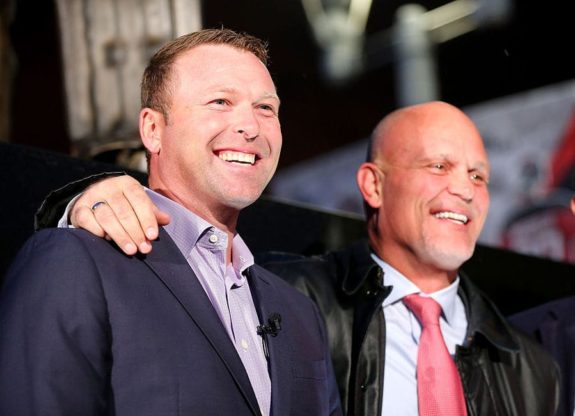
Alongside Niedermayer would be Daneyko, who played a physical game and was a defensive defenseman who never finished with more than 21 points in a single season. Because the two have contrasting styles, it makes sense for them to form the top pair.
Another player who deserves a spot on this team is Slava Fetisov, who was an original draft pick of the Montreal Canadiens in 1978. But due to restrictions in place from the Soviet Union, he was not allowed to play in North America. That changed in the 1980s when the Soviets allowed Russian players to head to North America as long as they continued playing for the Soviets internationally. That’s when the Devils selected him in the eighth round at the 1983 Draft.
He only played in nine NHL seasons. But he broke the barrier that encouraged Russian and European players to head over to North America to play in the NHL. He played a significant role in the Detroit Red Wings winning back-to-back Stanley Cups in 1997 and 1998, so he made the best of his time in the NHL too.
Related: Devils’ Top 10 Draft Picks
Playing alongside Fetisov is Sheldon Souray. A Devils’ third-round pick at the 1994 Draft, he made his NHL debut as a 21-year-old in 1997. His offensive prowess is what drove his game, as he had a bomb of a shot and finished with over 200 shots on goal in three different seasons.
Rounding out the Devils’ blue line are Paul Martin and Eric Weinrich. Weinrich was a second-round pick (32nd overall) at the 1985 Draft. He had a career that spanned over 17 seasons and 1157 games. He was a solid puck-mover, finishing his career with 388 points, and might be one of the more underappreciated Devils’ draft picks.

As for Martin, he was a second-round pick at the 2000 Draft and played six seasons for the Devils. After the departures of defensemen like Rafalski and Niedermayer, he eventually became a top-pair defenseman for the team. When he moved on from the Devils in 2010, he still maintained his role as a top-four defenseman with the Pittsburgh Penguins. He retired in 2018 and finished his career with 320 points in 870 games. He was a solid two-way defender like Weinrich, giving the Devils solid depth on their third pair.
Who Backs Up Brodeur?
If it wasn’t obvious, the Devils’ goaltending duo starts with Martin Brodeur. He was the 20th overall pick at the 1990 Draft and went on to become one of the greatest goaltenders of all-time. He holds the NHL record for wins, shutouts, and games played. He won the Vezina Trophy as the league’s best goaltender four times and won three Stanley Cup championships with the team.
There’s no question Brodeur is the undisputed no. 1 goaltender, but he does need a backup. It was tempting to place Mackenzie Blackwood here, but he’s still well too young to be one of the team’s all-time great draft picks. Because of Brodeur’s incredible success in net, there hasn’t been a ton of notable Devils’ draft picks among goaltenders.
But if there’s one to choose to play behind Brodeur, it’d be Sean Burke. He was a Devils’ second-round pick at the 1985 Draft and played four seasons with the team, before being part of the trade that brought Holik to New Jersey (From ‘HOCKEY; Devils Trade Burke, but Weinrich Goes, Too,’ New York Times – 8/29/1992).
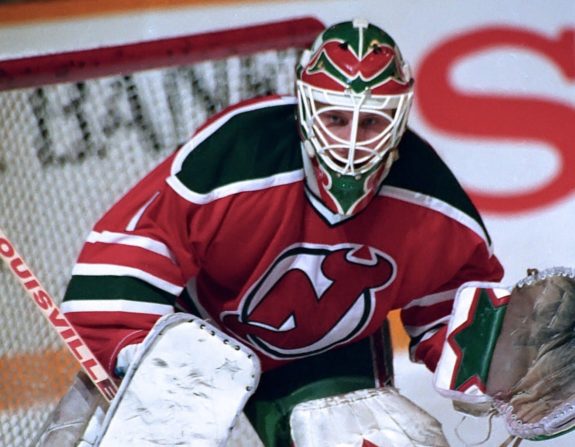
Burke is no Brodeur, but he had quite the career as an NHL goalie. He appeared in over 800 games and finished his career with 324 wins, as well as a .902 save percentage (SV%). At the height of his game (his age 28-36 seasons), he had a .913 SV% and was an NHL All-Star in 2001 and 2002. He even finished third in Vezina voting during the 2001-02 season with the Phoenix Coyotes. So he’d be a pretty decent option to back up Brodeur.
Final Devils’ All-Time Draft Roster
Now that we’ve assembled the entire team, here’s what the final roster looks like:
- Shanahan – Gomez – Maclean
- Elias – Rolston – Verbeek
- Muller – Morrison – Guerin
- Parise – Zajac – Sullivan
- Daneyko – Niedermayer
- Fetisov – Souray
- Martin – Weinrich
- Brodeur
- Burke
There were some tough decisions to make, like leaving out Sykora and Gionta. But that comes with the territory for an organization that drafted so well during their best years. This roster could also look quite different in a few years when Jack Hughes and Nico Hischier elevate their games and become household names. Not to mention the Devils could have three first-round picks in the upcoming 2020 Draft. And one of those could result in the chance to draft Alexis Lafreniere if they win the NHL Draft Lottery on June 26.
It’ll take a while for Lafreniere, or any 2020 selection, to make this list, but that’ll be the hope one day. Because if the Devils are ever to return to being perennial Stanley Cup contenders, they’ll need to start finding more high-end talent through the draft, as they did when they selected players like Niedermayer, Brodeur, and Elias.